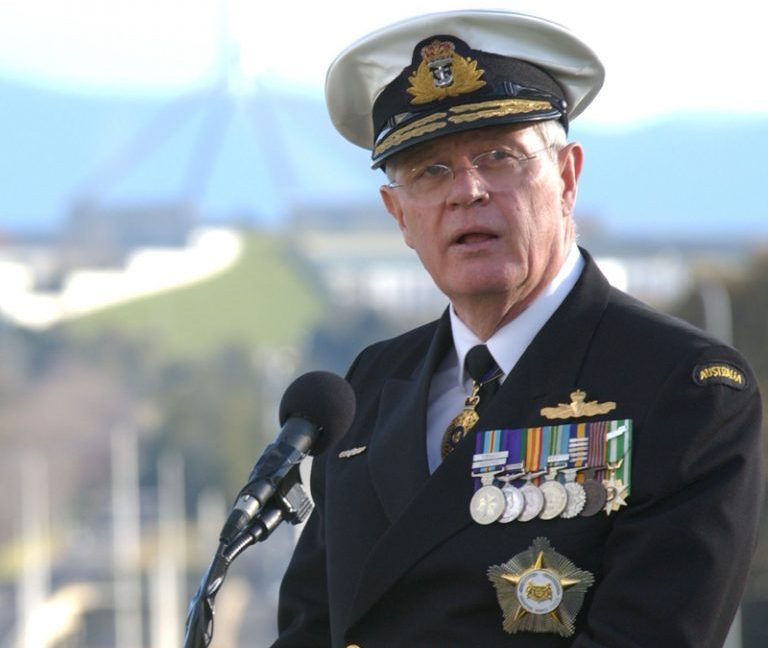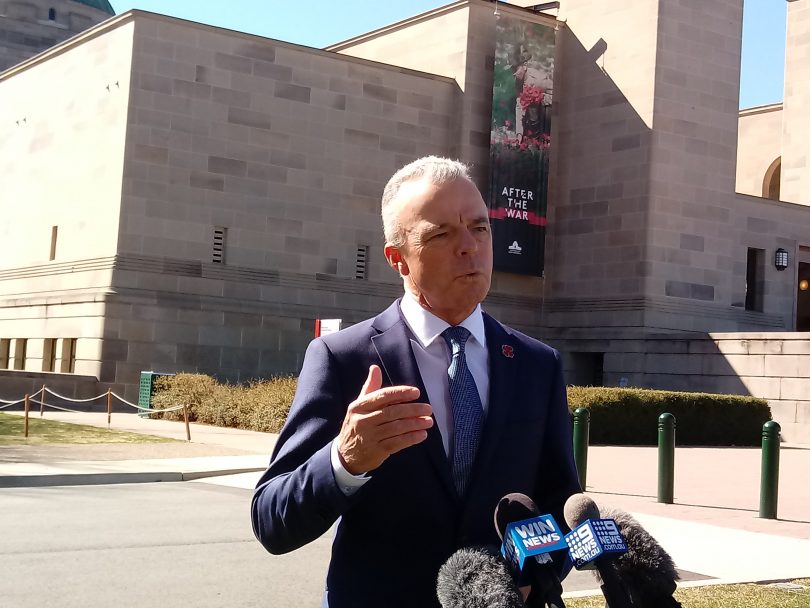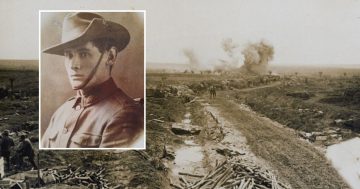
Admiral Chris Barrie (retired) says the proposed development will turn a place of significant commemoration into a grand museum. Photo: Australian Crisis Simulation Summit.
A former Chief of the Defence Force has called for the half a billion dollars earmarked for the Australian War Memorial expansion to be spent on a research institute for post-traumatic stress to help veterans suffering from the condition.
In his submission to the parliamentary inquiry into the AWM development project, Admiral Chris Barrie (retired) said he has also been troubled by the scale of the project and how it will impinge on the sacred status of the Memorial.
”I regret the recent trend that seems to have taken a turn towards the view that our place of national commemoration should be turned into a museum, that is a place of entertainment to amuse tourists where nothing should be overlooked in telling stories about war or peacekeeping,” he said.
”The culmination of this current trend is the proposal to turn a place of significant commemoration into a grand museum requiring the destruction of the ANZAC Hall, completed in 2004, and to use that space to create a grand new structure needed to satisfy the anticipated needs of tourists.”
Admiral Barrie said Charles Bean’s unique conception of a modest place of commemoration stands in stark contrast to most other countries, ”especially when compared to the plethora of museums that glorify war and its heroes”.
A Vietnam veteran, Admiral Barrie said he had always felt the gallery displays for the Vietnam War were sufficient for remembrance, whether for veterans, their families or the wider community.
In 2014, Admiral Barrie established a non-profit charity – PTSD Australia and New Zealand, also known as FearLess Outreach – to help people with post-traumatic stress. The goal is to establish a national outreach organisation and research institute, the cost of which was estimated at $500 million, the same cost as the AWM proposal.
He said that amount would be much better spent on the building, equipping and staffing of a national advanced brain and mind research institute that is dedicated to becoming a world-class centre of excellence in the treatment of post-traumatic stress.
One of the contentious arguments for the Memorial expansion has been that it would provide a healing effect for veterans, particularly from recent operations such as Iraq and Afghanistan.

Former AWM director Dr Brendan Nelson says the expansion is desperately needed by veterans. Photo: File.
Former AWM director Dr Brendan Nelson has been a passionate advocate of the so-called ‘therapeutic milieu’, and in his recent submission to the inquiry said that he saw it and felt its power every day of his seven years at the helm of the Memorial.
”The Memorial tells stories that hurt, in doing so they heal,” he said.
”Apart from many powerful stories in support of this, one of the key drivers of post-traumatic stress is meaninglessness.
“If you believe that what you did doesn’t matter, doesn’t count – that people neither know nor care about what you did, as a veteran you feel a devalued and diminished individual. Having ‘your story’ told and proudly so at the nation’s War Memorial is a very important part of the solution.”
The inquiry offered Dr Nelson a right of reply to the many critics of the project and he has rejected claims of a secret process, saying the memorial was open and transparent about its need for expansion and received bipartisan support.
”Indeed, much of what has been said to the Committee is misleading at best, disingenuous in part and is largely presented in a vacuum of a willingness to understand the need for, and purpose of, these much-needed extensions.”
The project is designed to tell the story of more recent conflicts and Dr Nelson said it’s desperately needed for the 100,000 young veterans the nation has created over the past 20 years.
He accused former Memorial employees of having sour grapes, saying they were driven by resentment about changes at the AWM after their leaving.
Dr Nelson dismissed claims that the expansion is a ”monument to Brendan Nelson”, saying they reveal the motives of some opponents.
”These critics regard these changes as in some way ‘overshadowing’, diminishing or in some way relegating to a forgotten past their own contributions,” Dr Nelson said.
”My very strong view is that it is in the end not about any of us privileged for a period of time to be custodians, but for these men and women who have devoted their lives not to themselves, but to us – and their last moments to one another.
”In my experience, what they want is to live in the heart of the nation they have served.
”Paradoxically, some who oversaw the installation of the bridge and forward gun of an entire warship (HMAS Brisbane), an Iroquois Helicopter and an M113 troop carrier, are now steadfastly opposing the expansion necessary to house the military artefacts so equally precious to this and subsequent generations of servicemen and women.”
Dr Nelson said opponents have been unwilling to engage with the Memorial, including the Australian Institute of Architects, which is campaigning against the loss of ANZAC Hall.
”Not one of those appearing before the Committee in opposition to the project responded to my invitation to allow me to take them on a tour of the Memorial to see what it does, what it means, what the problem is and why it urgently needs to be addressed,” he said.
Original Article published by Ian Bushnell on The RiotACT.







